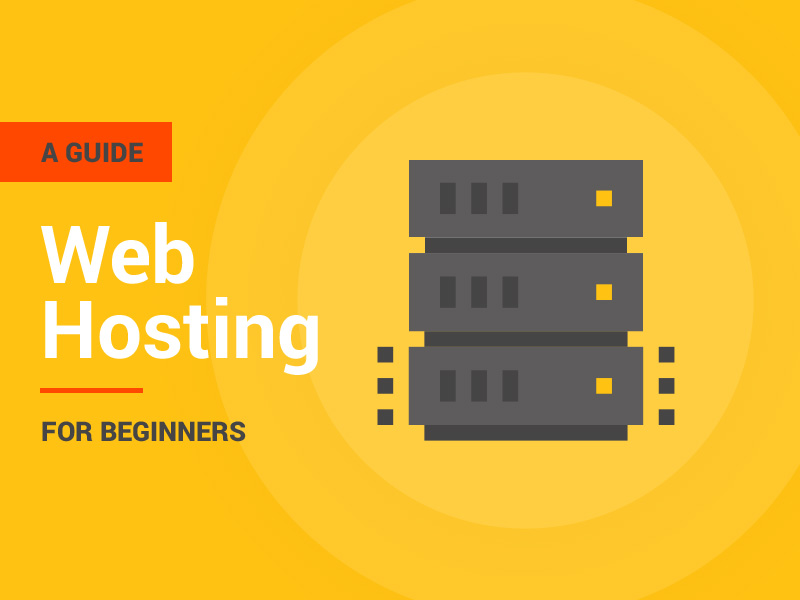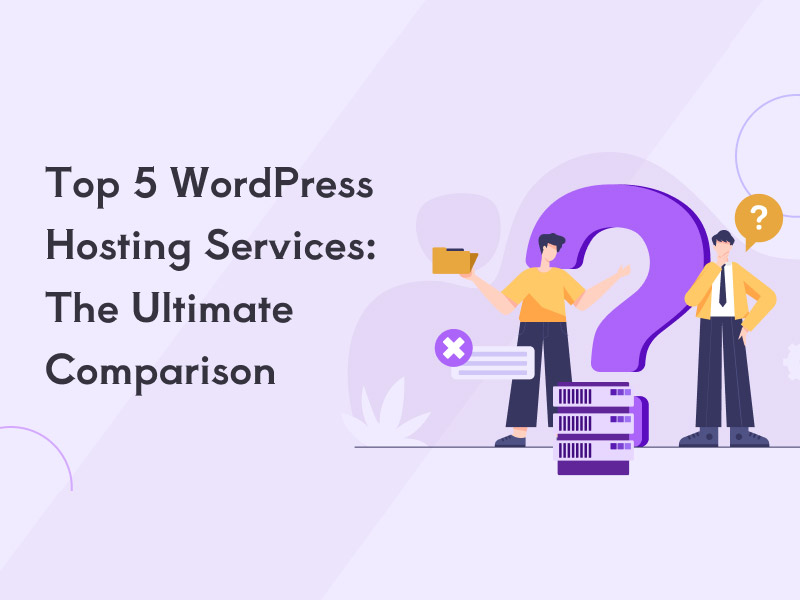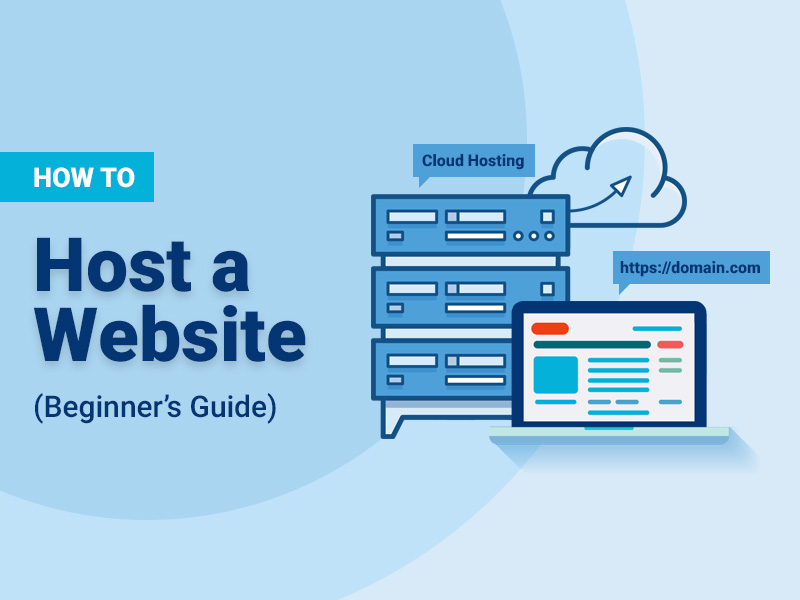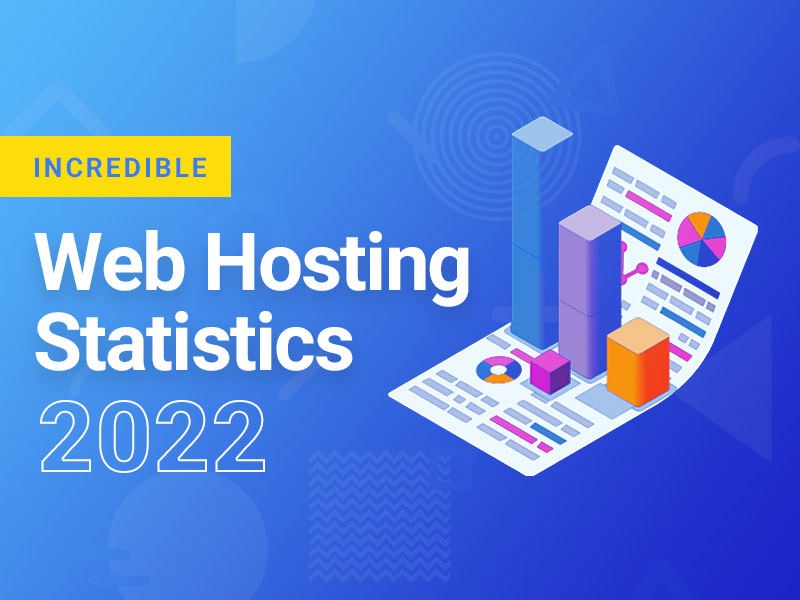Choosing a web host is the first step in getting your website up and running (if you already have a web domain).
Your website files are hosted on web servers, which are specialized computers that provide web hosting. Web hosting companies also provide the technology and services required to see your website on the Internet.
Data backup, firewall protection, technical assistance, email, domain name registration, website construction tools and applications are some of the add-on services offered by a web hosting provider.
STEP 1: Identifying the Type of Website You Want
For the most part, you’ll come across two types of websites:
Static websites are simple websites that have one or more web pages and are not dynamic (called HTML pages). FTP software can be used to upload the pages to your host’s server once you have built them on your computer (such as FileZilla).
Editing the pages on your computer and reuploading them will be required each time you make an update to your website. Static websites are those that can’t be changed dynamically.
Since they are less expensive, static websites lack the functionality and interactivity of dynamic websites.
A dynamic website is one in which the content changes depending on the viewer, the time of day, and various other variables.
When creating and updating content, they use both client-side and server-side scripts, an application’s appearance and interactivity can be enhanced by client-side scripts running on the user’s PC.
Many E-commerce and social networking sites employ server-side scripts, which are programmes that run on a server and give a tailored experience for each unique user.
Content management systems (CMS) power dynamic websites, allowing you to make changes to and add new content (such as text, images, and videos) as well as enabling visitors to post comments and start discussions.
Businesses and organisations benefit greatly from dynamic websites. E-commerce and blogging are examples of dynamic websites that can change over time.
STEP 2: Selecting a Web Hosting Provider
Web apps, as opposed to static HTML sites, can be hosted on a variety of different types of web servers.
You have a few options here, depending on your hosting requirements and comfort level:
Linux Hosting:
Unix-derived languages like PHP, Perl and Python can be run on Linux hosting, which commonly supports PostgreSQL and MySQL databases. Today, this is the system that is most widely employed.
Windows Hosting:
The ASP scripts are written in.NET and other Microsoft technologies can operate on Windows Hosting, which also supports Microsoft SQL Server and Access databases.
Regardless of what operating system you use at home or work, you can choose Linux or Windows hosting. Linux hosting is more cost-effective if your website does not require any scripting functionality.
Choose the platform that supports the technologies you employ if you need scripting and database support for your website.
STEP 3: Decide On A Web Host
Web hosting often offers a wide variety of services, including:
What is Shared Hosting?
In a Shared Hosting, your website will be housed on the same server as those of your other webmasters. In spite of this, you’ll have your own account (secured with login credentials). In order to keep costs down, you and other website owners share the expense of operating the server.
What is a VPS or Virtual Private Server?
In VPS Hosting, each website is hosted on a powerful server that has been partitioned into multiple virtual compartments. Each server’s operating system is set up differently so that it may operate on its own. This should be your first choice if you are concerned about security but do not want to invest in a dedicated server.
Recommended: Shared Hosting vs. VPS Hosting – The Ultimate Guide
What is a Dedicated Host?
With Dedicated Hosting, you have your own dedicated server, which increases speed, security, and, of course, cost. Allows for optimum setup, installation and flexibility for large organisations and high-traffic websites that need to be able to adapt to changing needs.
What is Cloud Hosting?
There is also Cloud Hosting which is multiple virtual servers (clouds) that can operate together to host a single website or a collection of websites via cloud hosting. It has a limitless capacity to deal with spikes in traffic. This means that the resources given to your cloud-hosted website can grow or shrink dynamically depending on how much traffic you receive. Large websites, such as e-commerce sites, newsletters, and blogs, can benefit greatly from this solution. So, if you run an eCommerce store, choose cloud-based eCommerce hosting solutions, as they are great in terms of data security too.
Starting with VPS (or even shared) hosting is the norm for most folks. A virtual private server (VPS) gives you all the power of a dedicated server, but at a fraction of the cost.
STEP 4: Modify the DNS (Domain Name System)
The Internet’s version of a phone book, Name Servers (also known as Domain Name Servers or DNS) are what you will receive once you have ordered web hosting.
You’ll need to update your domain’s Name Servers in order to get your site up and running. As a beginner, this is a basic but necessary step for you to do.
Step 5: Upload Your Website to The Internet
cPanel’s File Manager or an FTP Client (like FileZilla) can now be used to upload your website to your account, after which your website will go online.
How to Upload Your Website Using cPanel’s File Manager
- Go to your cPanel and login.
- To access the File Manager, click on the File Manager icon.
- Right-click on Go and select “WebRoot”.
- Make sure to include all the files and folders under public HTML and their appropriate domain folder.
Use an FTP Client to Upload a Website
Using an FTP client like FileZilla Client, you can access FTP. It allows you to view the files and folders on our server as if they were on your own computer. The /public HTML/ subdirectory can be reached by dragging and dropping your website’s files into it.
Viola! Your website can now be viewed by the public.
Also read: How to Host a Website? – See Step by Step and Discover the Secrets
Top 8 Most Efficient Web Hosting Software For Small Businesses
Choosing a web host can be a daunting affair these days, what with so many companies offering web hosting services. To make it easier for you to focus your search, we’ve compiled a thorough list of web hosting providers.
Finding the best web hosting services can be a daunting task, for example, it can be website hosting in China, the USA, or another county with a large number of options available. The finest hosting sites for small and medium-sized businesses can be narrowed down to a handful by looking at specific criteria, such as simplicity of use, affordability and functionality.
There should be no problem getting your website up and running with any web hosting service. Even if they get past that, though, they should not be done yet. You’re looking for a solution that doesn’t impede your company’s capacity to grow.
Reliability in terms of uptime and speed of page loading are important considerations. You may rest easy knowing that we’ve done the hard work for you and come up with our top selections for the best website hosting services on the market.
The 8 Most Efficient Web Hosting Software For Small Businesses:
- Hostinger
- SiteGround
- Hostwinds
- DreamHost
- Cloudways
- Bluehost
- WP Engine
- GoDaddy Web Hosting
- HostGator
Conclusions
A reputable web hosting service will keep you from having to go back and forth while you design and create the new website because web hosting isn’t an umbrella standard service.
For us at MediaOne, the difference between a successful company and an also-ran can be the result of a unique, personalised design. A well-designed and interactive website is no easy task, especially if you’re trying to strike a delicate balance between form and function. That’s where MediaOne’s ten years of experience in web design and development come in handy.
Reach out to MediaOne right now to get started on the websites of your dreams and see how far you could take your business.






